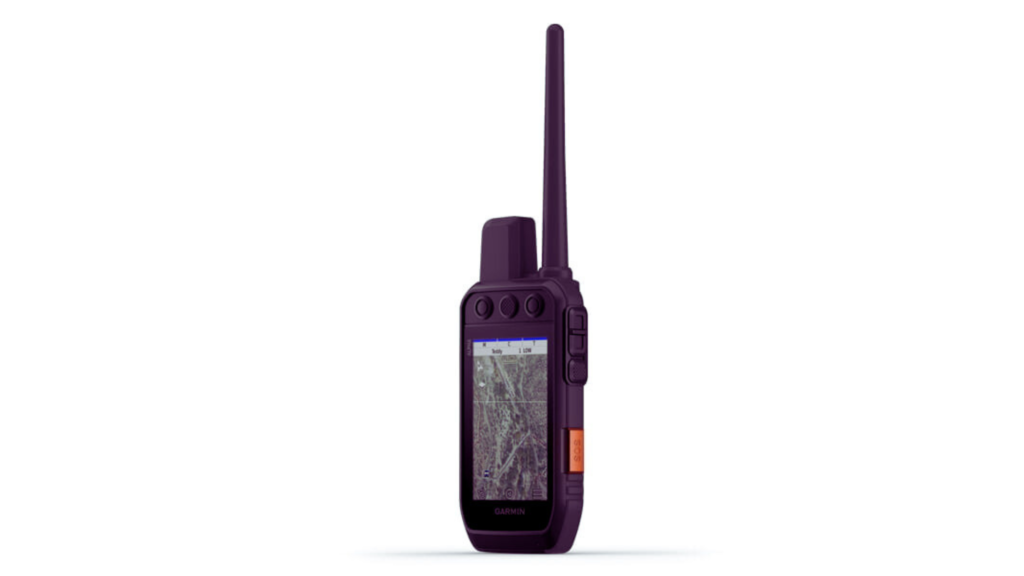| Summary: The Garmin Alpha 200i long range antenna is one of the most advanced GPS tracking and dog training devices available today, offering hunters, trainers, and outdoor enthusiasts two-way messaging via inReach satellite communication, a large 3.5-inch sunlight-readable touchscreen, and multi-GNSS tracking capabilities. |
Designed for reliability in remote areas, the device supports a long-range antenna to improve GPS and communication range. However, some users experience issues such as weak signals, limited range, or frequent signal drops, making it difficult to track their dogs over extended distances.Discover the ideal fit by learning what’s the correct collar size for a Newfoundland dog? to ensure your pet’s comfort and safety.
A properly functioning Garmin alpha 200i long range antenna is crucial for achieving the maximum tracking range of up to 9 miles (14.5 km) in ideal conditions. However, factors such as interference, incorrect installation, environmental obstacles, outdated firmware, and hardware damage can reduce its effectiveness. This guide provides a step-by-step approach to troubleshooting common issues and optimizing your Garmin Alpha 200i long-range antenna for superior performance.
Blog Highlights
ToggleUnderstanding the Garmin Alpha 200i Long Range Antenna
The Garmin Alpha 200i comes with a standard flexible VHF antenna, which can be replaced with an extended-range version for better signal transmission. The long-range antenna is designed to enhance line-of-sight communication, allowing for better connectivity in open terrain.
It typically measures around 13 to 21 inches (33 to 53 cm), depending on the model. Some users opt for aftermarket antennas, which can extend up to 48 inches (122 cm), but these are not always compatible with Garmin’s firmware and may void the warranty.

Common Issues Affecting Long-Range Performance
The Garmin Alpha 200i long range antenna can experience issues like interference, environmental obstructions, or physical damage, all of which can reduce performance. Proper maintenance and storage help maintain optimal range and extend the antenna’s lifespan.
Several factors can interfere with the long-range tracking capabilities of the Garmin Alpha 200i. The most common issues include:
1. Weak Signal or Limited Range
Despite the maximum range of 9 miles (14.5 km) in ideal conditions, many users report connectivity issues when using the long-range antenna. Thick vegetation, hills, and buildings can significantly reduce the effective range to 2-4 miles (3-6 km) in dense environments.
2. Signal Drops and Inconsistent Connectivity
Frequent signal drops can occur if the antenna is not properly attached, has internal damage, or if the device’s firmware is outdated. Interference from other VHF devices, metal structures, or electronic equipment can also disrupt the signal. Discover the perfect collar size for an Anatolian Shepherd Dog to ensure comfort and security for your furry friend.
3. Outdated Firmware Causing Performance Issues
Garmin regularly updates its firmware to improve signal processing, battery efficiency, and connectivity stability. Running an outdated version may cause reduced performance or even connectivity failures.
4. Battery-Related Connectivity Problems
The Alpha 200i’s lithium-ion battery lasts approximately 20 hours per charge, but enabling long-range tracking features drains it faster. If the battery is low, the signal transmission strength can drop significantly, leading to reduced range and frequent disconnections.
5. Physical Damage to the Antenna
The long-range antenna is made of flexible but delicate materials. Bending, cracking, or internal damage from rough handling can reduce its effectiveness. If an antenna is bent too many times, its internal conductive elements can break, leading to a total loss of functionality.
Step-by-Step Troubleshooting Guide
1. Ensuring Proper Antenna Installation
One of the first steps in troubleshooting poor performance is checking whether the long-range antenna is securely attached. Follow these steps:
- Turn off the Garmin Alpha 200i before handling the antenna.
- Unscrew the current antenna and inspect the connector port for dust or damage.
- Align the long-range antenna with the SMA connector and tighten it clockwise until secure. Avoid over-tightening, as this can damage the connector.
- Power the device back on and test the signal.
2. Optimizing Device Placement for Maximum Range
The Garmin Alpha 200i’s signal strength depends significantly on how and where it is held. For the best results:
- Hold the device at chest or head level to minimize obstructions.
- Avoid covering the antenna with your hand, as this can reduce signal transmission.
- Stand in an open field or elevated location, as GPS and VHF signals travel best with clear line-of-sight.
3. Updating Firmware for Improved Performance
Updating the Garmin Alpha 200i firmware ensures optimal performance and fixes known bugs. To update:
- Connect your device to a computer using a USB-C cable.
- Download and install Garmin Express.
- Open the software, select your device, and click “Check for Updates.”
- Install any available firmware updates and restart the device.

4. Checking the Antenna for Physical Damage
- Inspect the antenna’s length for cracks, bends, or fraying.
- If any visible damage is found, replace the antenna with a genuine Garmin extended-range VHF antenna.
- If replacing the antenna does not improve signal strength, the issue may be with the internal RF circuitry of the device.
5. Reducing Interference from Other Devices
- Move away from power lines, cell towers, and radio transmitters, which can interfere with VHF signals.
- If tracking multiple dogs, make sure each collar and handheld device is assigned to a unique frequency to prevent signal overlap.
- Turn off Wi-Fi and Bluetooth when not in use to reduce internal signal interference.
Advanced Optimization Techniques
If standard troubleshooting does not resolve the issue, consider these advanced techniques to enhance your Garmin Alpha 200i’s range.
1. Using a High-Gain External Antenna
For users needing maximum range, an external high-gain antenna can be attached to a vehicle or backpack. Some models extend up to 48 inches (122 cm) and provide superior signal reach in hilly terrain or deep forests.
2. Performing a Signal Strength Test
To check the real-time signal strength:
- Navigate to Menu > Dog Settings > Test GPS Signal.
- Observe the signal bars. If they remain low, try adjusting the antenna angle or changing locations.
- If the signal remains poor, replacing the antenna or battery may be necessary.

3. Factory Resetting the Garmin Alpha 200i
If all else fails, performing a factory reset may resolve persistent connectivity issues:
- Go to Menu > Settings > System > Reset > Restore Factory Defaults.
- Confirm the reset and allow the device to restart.
- Reattach the antenna and test signal strength.

Optimizing the Garmin Alpha 200i Long Range Antenna for Maximum Performance
The Garmin Alpha 200i is a powerful tracking and training device, but to get the best performance, it’s crucial to optimize its long-range antenna. Whether you’re a professional dog trainer, a hunter, or someone who relies on the device for fieldwork, understanding how to extend the range and improve signal reception can make all the difference. Learn more about the unique double-layered coat of an Anatolian Shepherd and how to care for it effectively.
Understanding the Range Capabilities of the Garmin Alpha 200i Antenna
The standard Garmin Alpha 200i antenna provides a maximum tracking range of up to 9 miles (14.5 km) in optimal conditions. However, real-world performance may vary depending on terrain, obstructions, weather, and interference. In some cases, the range might drop to just 2-5 miles (3.2-8 km) if obstacles such as dense forests, hills, and buildings are present.
For users needing longer range performance, upgrading to a high-gain external antenna can extend the range significantly. Some third-party aftermarket antennas claim to boost the signal up to 15-20 miles (24-32 km) under ideal circumstances. These extended antennas are particularly useful for mountainous terrains, vast open fields, and desert landscapes, where the default antenna may struggle to maintain a strong connection.
Best Antenna Placement for Maximum Signal Strength
Proper antenna positioning is crucial for ensuring the best signal reception. The default flexible antenna on the Garmin Alpha 200i is designed to work well in most situations, but you can improve its performance by following these best practices:
- Keep the antenna vertical – The best signal transmission occurs when the antenna is held upright. If it tilts or bends, it may reduce the effective range.
- Avoid body interference – Your body can block the signal, especially if you’re carrying the device in a backpack or pocket. Keep the Alpha 200i in an open area, preferably attached to a belt clip or vest.
- Elevate the device – If possible, hold the Garmin Alpha 200i above waist level when tracking, as obstructions at lower levels (such as bushes, rocks, or water) can interfere with the signal.
- Use an external roof-mounted antenna – If you’re tracking from a vehicle, mounting an external high-gain antenna on the roof can significantly improve range. Garmin offers magnetic antennas that attach to vehicles, improving line-of-sight transmission.

Common Signal Interference Issues and How to Fix Them
Even with the best antenna setup, you may still encounter signal loss or weak reception due to environmental factors or interference from electronic devices. Below are some common reasons why your Garmin Alpha 200i might experience connectivity problems and how to resolve them.
1. Obstructions and Terrain Interference
- Issue: Dense forests, hills, mountains, and urban buildings can block signals.
- Solution: Move to higher ground or an open field to establish a clearer signal path. If possible, reposition your dog’s collar antenna vertically for better connectivity.
2. Weather Conditions Affecting Range
- Issue: Heavy rain, fog, and snow can weaken radio signal transmission.
- Solution: Ensure that your antenna is dry and free from debris. Consider using a water-resistant antenna cover to minimize weather interference.
3. Electronic Interference from Other Devices
- Issue: Devices like mobile phones, radios, and power lines can cause signal disruption.
- Solution: Keep the Garmin Alpha 200i away from strong electronic sources. If using a vehicle-mounted antenna, turn off non-essential electronic devices.
4. Faulty or Damaged Antenna
- Issue: A broken or loose antenna connection can lead to weak signals.
- Solution: Inspect the antenna for any visible damage and ensure it is securely attached. If the rubber coating is torn, replacing the antenna may be necessary.
Upgrading to a High-Gain Antenna for Extended Tracking
If you require more than 9 miles of range, upgrading to a longer, high-gain antenna is the best solution. Garmin offers several aftermarket antennas, such as:
- Garmin Extended Range Antenna (14 inches) – Provides a slight range boost for better performance in dense areas.
- Garmin Folding Antenna (18 inches) – A foldable option designed for portability and extended range in open fields.
- Aftermarket SMA Connector Antennas (up to 48 inches) – Third-party solutions designed for maximum long-distance tracking, ideal for extreme environments.
Maintaining Your Garmin Alpha 200i for Long-Term Performance
To prevent future issues, follow these best practices:
- Regularly clean the antenna and connector port to remove dust or debris.
- Store the device in a protective case when not in use.
- Charge the battery fully before extended use to maintain signal strength.
- Perform firmware updates at least every 3-6 months.
Final Thoughts
The garmin alpha 200i long range antenna is a powerful GPS tracking system, but maximizing its long-range antenna performance requires proper maintenance, correct installation, and strategic positioning. By following this guide, users can troubleshoot common issues, update firmware, reduce interference, and optimize signal strength to ensure they get the best performance from their device. If persistent problems arise, consider investing in a high-gain antenna or consulting Garmin support for further assistance. For insights on whether Pomeranians should wear a collar, including considerations for safety and alternatives, check out this informative article.
With the right adjustments, the Alpha 200i’s long-range antenna can consistently deliver top-tier tracking performance in any environment.





